




Discover the valuable insights our consultants provide. Subscribe to our Insights blog to receive email alerts whenever we post something new!


Published on: Sep 16, 2025 9:00:00 AM by Sandra Wojtysiak
Updated on: October 22, 2025
Choosing an inventory valuation method is important for any company that carries inventory on its balance sheet. However, determining which method is best is not always straightforward.
The common response might be, “That’s a question for the accounting department.”
While accounting usually makes the final decision, anyone working with inventory needs to understand the different valuation methods and how each transaction impacts financials.
Building this understanding helps bridge the gap between supply chain and accounting, reducing confusion and preventing headaches down the road.
As the name suggests, this method assumes the oldest inventory on hand is the first to be used, sold, or disposed of. It’s commonly applied in the food processing industry, where using the oldest ingredients first helps maintain freshness. The cost tied to those oldest items is recorded as the value issued.
Under this method, the value of an item is calculated as the average cost of inventory over time. Each time new inventory is received, a new average cost is computed. For example, a manufacturer purchasing bolts for production might pay $0.10 per bolt on one delivery and $0.12 per bolt on another. After each receipt, the costs are averaged, resulting in a new unit cost that reflects all purchases to date.
Each item (or SKU) is assigned a fixed “standard” cost. Inventory value is then calculated simply as Standard Cost × Quantity on Hand. All receipts, disposals, and shipments are recorded at this same standard cost, regardless of actual purchase or production price. For example, in a facility producing large volumes of identical items (such as coffee cups) every cup carries the same assigned cost, no matter when or by whom it was made.
This method recognizes that even items with the same inventory ID (SKU) may have unique features that impact their cost or value. For example, consider a set of ten bikes built with the same frame. Some may have upgraded brakes, tires, or cranksets. As a result, each bike carries a different cost of production.
This method assumes the most recently acquired inventory is sold first. However, because it often reduces taxable income while leaving older, potentially obsolete inventory costs on the balance sheet, LIFO is generally not accepted under most accounting standards. For this reason, we will not cover it in detail.
Now, let’s get into what characteristics to look for in the business to determine the best valuation method:
| Weighted Average | Most commonly used inventory valuation method due to its calculation simplicity |
| Wholesalers or distributors of product | |
| Immaterial differences from one unit to another for the same item | |
| Evens out any inconsistency in purchase prices | |
| FIFO | Wholesalers or distributors of product |
| Immaterial differences from one unit to another for the same item | |
| Follows your typical physical inventory flow with first units in, first to ship out | |
| Standard | Fast-paced manufacturing industry where labor, materials, and overhead are difficult to capture in a timely manner |
| Market value of commonly used items fluctuates on a daily/weekly basis | |
| Specific ID | Highly valuable goods |
| Each unit is typically unique, especially in cost or labor to acquire | |
| Ability to track individual unit sold, disposed of, or used |
How does this translate to the real world? Here are some examples to help illustrate each method.
| Example |
| A manufacturer that sells machines and related accessories often purchases components and hardware from suppliers. At times, costs may decrease compared to prior months due to improved purchasing practices or vendor discounts. Rather than making certain orders appear more profitable simply because the lower-cost receipts happened to align with specific sales, the weighted average method spreads those cost savings across all current inventory. This ensures a consistent unit cost is applied to items moving forward. |
| Example |
| Some types of inventory, such as items with expiration dates, naturally require a first-in, first-out approach. By shipping or using the oldest stock first, companies ensure products remain fresh and minimize waste. Even when items do not expire, such as hardware or general merchandise, FIFO can still be valuable. It helps maintain consistent cost flow and prevents older inventory from sitting too long in storage, which could otherwise lead to obsolescence or damage over time. |
| Example |
| In some production environments, items are manufactured in batches, with certain stages of the process handled by outside vendors. Because lot sizes may vary, actual costs can fluctuate from one batch to another. To avoid the complexity of tracking these variances for every lot, a fixed standard cost per unit is assigned. This approach simplifies cost management and provides consistency when evaluating production expenses over time. |
| Example |
| Certain industries deal with products that may share the same general ID or SKU but differ significantly in their individual features and costs. For example, a group of bikes may share the same frame, yet differ in their brakes, tires, or cranksets. Using specific identification, each bike is valued at its actual cost, ensuring accuracy when variations between items meaningfully affect value. |
Each approach has unique benefits and trade-offs:
| Advantages | Disadvantages | |
| First In, First Out (FIFO) | Follows physical flow of inventory, especially in an industry with perishable inventory. | Typically results in higher tax liability during periods of inflation, since older, lower-cost inventory remains on the books while cost of sales reflects those lower historical costs. This combination leads to a higher reported inventory value and lower cost of sales. |
| Newest items are represented on the balance sheet with the most recent and up to date costs. | Harder to calculate manually as it requires tracking each individual receipt quantity on hand, then reducing each unit sold from the oldest receipt. | |
| Weighted Average | Easy to calculate due to requiring a single recalculation of the average at every receipt and summarizing the new total across all units. | Does not reflect current market value of inventory on hand. |
| Accounts for any fluctuations in purchasing unit costs over time. | Does not reflect the physical flow of inventory. | |
| Standard | Helps control costs by allowing managers to compare month over month with consistent costs per unit. | Timely process to initially set standard cost. |
| Cost savings in record keeping. | Requires reviewing standard cost periodically. | |
| Reduces timing issues in data entry, especially in a fast-paced manufacturing environment. | Difficult to shift for sudden market changes in costs. | |
| Minimizes errors in the costing of inventory due to data entry. | ||
| Easier to set prices for finished goods. | ||
| Expedites costing reports. | ||
| Specific ID | Cost always follows the unit, allowing for margin to be reported on a per unit basis. | Must be able to record which unit/lot was sold/used on each transaction. |
| Ability to track exact cost of each unit on hand. | Requires documentation on every receipt and every sale/disposal transaction to record which unit is being transacted.1 | |
| True representation of cost of sales and inventory on hand on financial statements. | ||
| Requires documentation on every receipt and every sale/disposal transaction to record which unit is being transacted.1 |
1 Displayed as both an advantage and disadvantage as this can be a requirement for regulated industries. Utilizing a valuation method that enforces this restriction could satisfy the documentation requirement
When it comes time to decide which valuation method works best, many businesses simply choose one approach and apply it across all products. This keeps things straightforward, with a single default method in place. However, there are situations where using more than one method makes sense.
While it’s less common to mix approaches, such as applying FIFO to some items and weighted average to others, it can be practical. For example, purchased items from vendors may be tracked using FIFO or weighted average, while custom-manufactured goods might be valued using specific identification to better capture profit margins on finished products.
Need help determining the right valuation method for your business? SVA Consulting is here to help. Contact us today to learn more.
© 2025 SVA ConsultingShare this post:

Sandra is a Solution Architecture Manager with SVA Consulting.







contact@svaconsulting.com

(800) 366-9091

1221 John Q Hammons Dr., Suite 201, Madison, WI 53717

18650 W. Corporate Dr., Suite 205, Brookfield, WI 53045

1600 Utica Ave S, 9th Floor,
Saint Louis Park, MN 55416

7135 E. Camelback Road, 230, Scottsdale, AZ 85251

109 West Commercial Street, Suite 107, Sanford, FL 32771
©2025 SVA Consulting, LLC. All Rights Reserved. | Privacy Policy | Cookie Policy | CCPA
